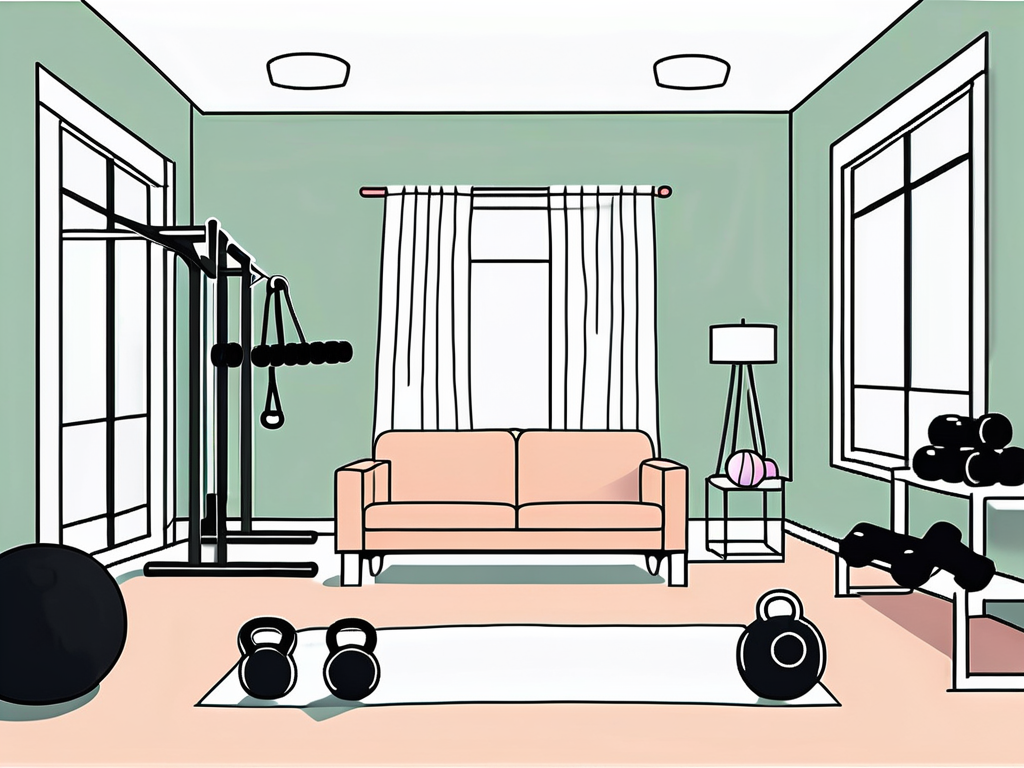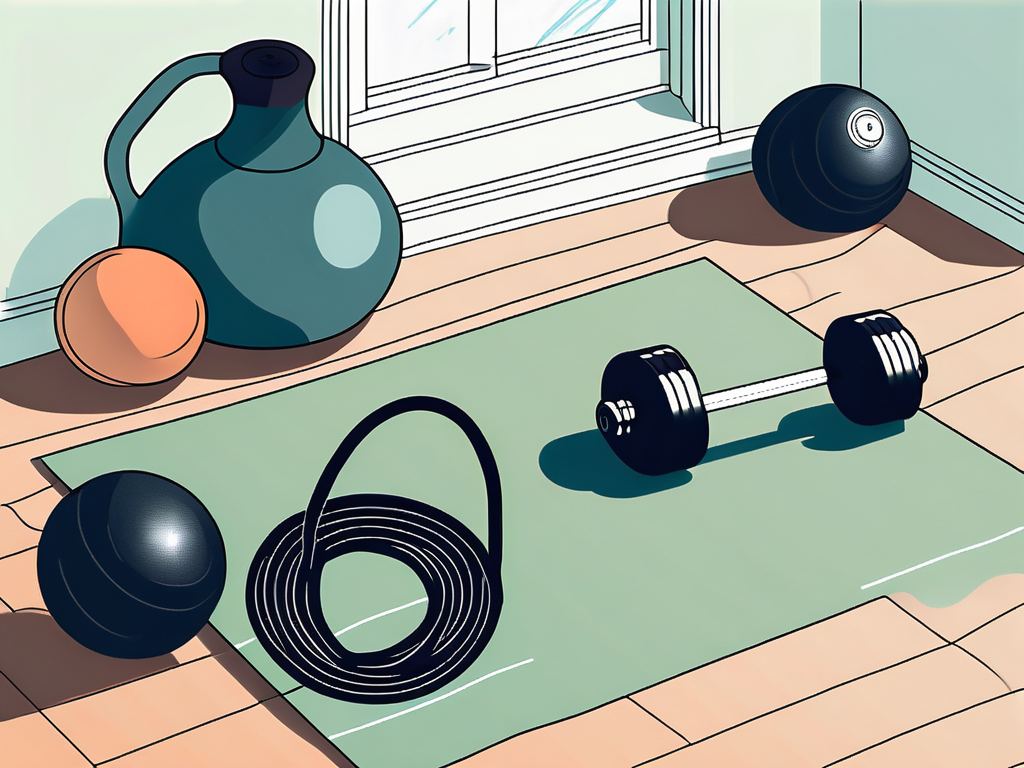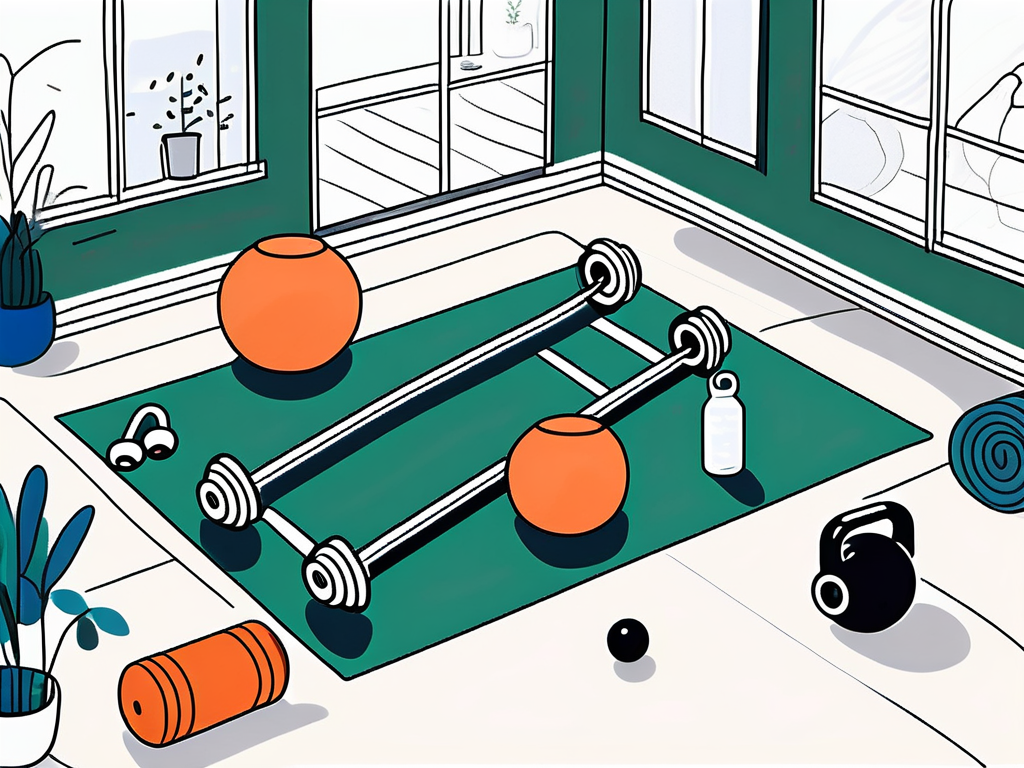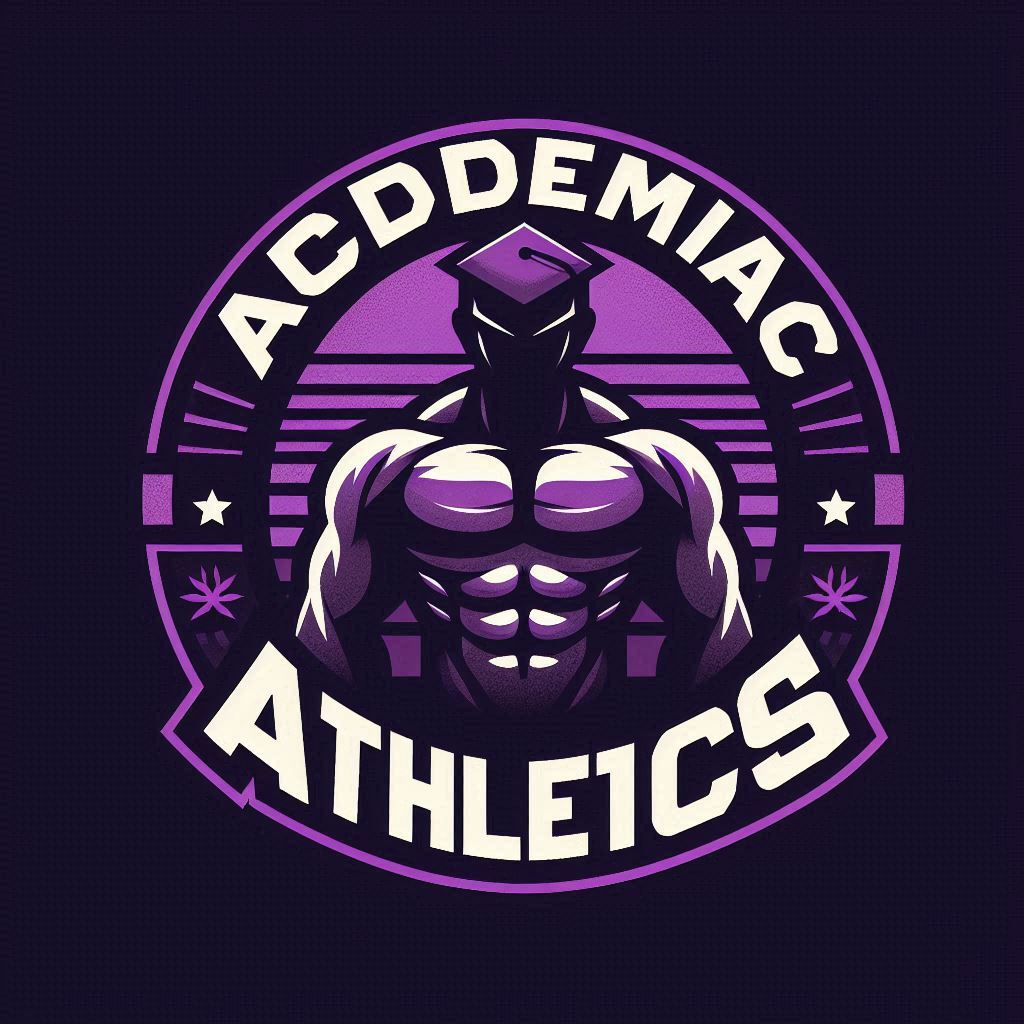Working out from the comfort of your own home has become increasingly popular in recent years. Whether you’re looking to save time and money by skipping the gym, or if you prefer the privacy of your own space, at-home workouts can be just as effective as hitting the weights at a fitness center. In this article, we’ll explore the seven best at-home workout routines that will help you stay fit and achieve your fitness goals without ever leaving your home.
Understanding the Basics of Home Workouts
Before we dive into the specific workout routines, let’s first understand the basics of home workouts. Regular exercise is an essential part of a healthy lifestyle, providing incredible benefits for both your physical and mental well-being.

When it comes to home workouts, creating a dedicated space can make a significant difference in your motivation and consistency. Designating an area in your home specifically for exercise can help signal to your brain that it’s time to focus and work out. This space doesn’t have to be large or elaborate; even a corner with a yoga mat and some equipment can suffice.
The Importance of Regular Exercise
Regular exercise has numerous benefits for your overall health. It boosts your mood, improves your cardiovascular health, helps control weight, and reduces the risk of chronic illnesses such as heart disease and diabetes. Additionally, exercise can enhance your sleep quality and decrease feelings of stress and anxiety.
Moreover, incorporating a variety of workout styles into your routine can prevent boredom and plateaus. Mixing up activities like strength training, cardio, yoga, and HIIT can target different muscle groups, improve overall fitness, and keep your workouts engaging and challenging.
Benefits of Training at Home
Training at home offers several advantages. First and foremost, it saves you time and eliminates the need to travel to a gym. Secondly, it gives you the freedom to work out on your schedule, without worrying about opening hours or crowded spaces. Finally, working out at home allows you to design a personalized routine tailored to your specific goals and preferences.
Additionally, exercising at home provides a sense of privacy and comfort that may boost your confidence, especially if you’re new to working out. You can experiment with different exercises, play your favorite music as loud as you want, and focus entirely on your form without feeling self-conscious.
Essential Equipment for Home Workouts
You don’t need fancy gym equipment to have an effective home workout. However, having a few key pieces of equipment can greatly enhance your training sessions. Items such as resistance bands, dumbbells, stability balls, and yoga mats are relatively inexpensive and versatile, allowing you to perform a wide range of exercises.
Moreover, investing in equipment like a jump rope, kettlebell, or foam roller can add variety to your workouts and target different muscle groups. These tools can also help improve your balance, flexibility, and recovery, enhancing the overall effectiveness of your home exercise routine.
The Anatomy of an Effective Home Workout
Now that we’ve covered the basics, let’s take a closer look at the components of an effective home workout. A well-rounded routine should include warm-up exercises, strength training, cardiovascular exercises, and cool-down techniques.
Warm-Up Exercises
Before diving into your main workout, it’s crucial to warm up your muscles and prepare your body for the exercises ahead. This can be done through dynamic stretching, light cardio exercises, and mobility drills. Warming up helps prevent injuries and improves your performance during the workout itself.
Dynamic stretching involves moving your body through a full range of motion, such as arm circles, leg swings, and torso twists. This helps increase blood flow to your muscles and improves their flexibility. Light cardio exercises like jogging in place or jumping rope for a few minutes can also elevate your heart rate and warm up your body.
In addition to dynamic stretching and light cardio, incorporating mobility drills into your warm-up routine can further enhance your workout. These drills focus on improving joint mobility and range of motion, which can help prevent injuries and optimize your exercise performance. Examples of mobility drills include hip circles, shoulder rolls, and ankle rotations.
Strength Training
Strength training is a vital component of any workout routine, whether you’re training at home or in a gym. It helps build and tone your muscles, increases your metabolism, and promotes bone health. Bodyweight exercises, using resistance bands, or using dumbbells are all great options for strength training at home.
Bodyweight exercises, such as push-ups, squats, and lunges, are effective for building strength and can be done without any equipment. They engage multiple muscle groups and can be modified to suit different fitness levels. Resistance bands are another versatile tool for strength training at home. They provide resistance throughout the entire range of motion, challenging your muscles and promoting muscle growth.
If you have access to dumbbells, you can incorporate them into your home workout routine to add an extra challenge. Dumbbell exercises like bicep curls, shoulder presses, and lunges with weights can help increase muscle strength and definition.
Cardiovascular Exercises
Cardiovascular exercises are important for improving your heart health, burning calories, and increasing your endurance. At home, you can engage in activities such as jumping jacks, high knees, or even dance routines to get your heart rate up. You can also consider investing in a stationary bike or a treadmill if you prefer more traditional cardio equipment.
Jumping jacks are a classic cardio exercise that can be done in a small space. They elevate your heart rate, work your leg muscles, and improve coordination. High knees, on the other hand, involve running in place while lifting your knees as high as possible. This exercise targets your lower body and gets your heart pumping.
If you enjoy dancing, incorporating dance routines into your home workout can be a fun and effective way to get your cardio in. You can follow along with online dance tutorials or create your own routine to your favorite music. Not only will you burn calories, but you’ll also improve your coordination and have a great time.
Cool-Down Techniques
After an intense workout, it’s essential to cool down and allow your body to recover. Cooling down can be achieved through stretching exercises, foam rolling, or practicing yoga poses. Not only does it help prevent muscle soreness, but it also aids in the overall flexibility and mobility of your body.
Stretching exercises after a workout help lengthen and relax your muscles, reducing the risk of post-workout stiffness and soreness. Focus on stretching the major muscle groups you targeted during your workout, such as your quadriceps, hamstrings, and chest. Holding each stretch for 15-30 seconds and breathing deeply can enhance the relaxation and flexibility benefits.
Foam rolling is another effective cool-down technique that can help release tension in your muscles and improve their recovery. By using a foam roller to apply pressure to different areas of your body, you can break up adhesions and knots, promoting better blood flow and reducing muscle tightness.
If you prefer a more holistic approach, practicing yoga poses as part of your cool-down routine can provide numerous benefits. Yoga helps improve flexibility, balance, and posture, while also promoting relaxation and stress reduction. Incorporating a few minutes of gentle yoga poses, such as child’s pose or downward dog, can help calm your mind and body after a challenging workout.
The 7 Best At-Home Workout Routines
High-Intensity Interval Training (HIIT)
HIIT workouts are incredibly effective for burning calories and improving cardiovascular fitness. These workouts involve intense bursts of exercise followed by short recovery periods. You can easily create your own HIIT routine at home by combining bodyweight exercises such as burpees, mountain climbers, and squat jumps.

Not only does HIIT help you burn calories during the workout, but it also boosts your metabolism, allowing you to continue burning calories even after you’ve finished exercising. This makes it an excellent choice for those looking to maximize their calorie burn in a short amount of time.
Yoga and Pilates
If you prefer a more low-impact workout that focuses on flexibility, balance, and core strength, yoga and pilates are excellent choices. There are plenty of online resources and videos available to guide you through different yoga flows or pilates routines that can be done from the comfort of your living room.
Yoga not only helps improve physical strength and flexibility but also promotes mental well-being. It incorporates breathing exercises and mindfulness, allowing you to find a sense of calm and relaxation amidst the chaos of everyday life. Pilates, on the other hand, focuses on strengthening your core and improving posture, making it a great option for those looking to improve their overall body alignment.
Bodyweight Training
Bodyweight exercises are fantastic for strength training and can be done anywhere, even without any equipment. Push-ups, squats, lunges, and planks are just a few examples of bodyweight exercises that target multiple muscle groups. Combine different exercises to create a challenging and effective full-body workout.
One of the great things about bodyweight training is that it allows you to work on your functional strength. By using your own body as resistance, you engage multiple muscle groups simultaneously, improving your overall coordination and stability. Plus, the convenience of not needing any equipment means you can easily fit in a workout whenever and wherever you want.
Resistance Band Workouts
Resistance bands are a versatile and affordable piece of equipment that can add resistance to your exercises. They can be used to target specific muscle groups and increase the intensity of your training. Resistance band workouts can be easily modified to suit different fitness levels and goals.
What makes resistance bands particularly effective is their ability to provide constant tension throughout the entire range of motion. This helps stimulate muscle growth and improve muscle endurance. Additionally, resistance bands are lightweight and portable, making them a great option for those who travel frequently or have limited space at home.
Stability Ball Exercises
A stability ball is another inexpensive equipment option that can enhance your home workouts. It can improve your core stability, balance, and overall strength. By incorporating exercises such as stability ball crunches, bridges, and planks, you can engage your core and target various muscle groups effectively.
Working out on a stability ball challenges your body in a unique way. It requires you to engage your core muscles to maintain balance and stability, which in turn helps improve your posture and reduce the risk of back pain. Additionally, stability ball exercises can also help improve your flexibility and range of motion, making it a great addition to any home workout routine.
Aerobic Workouts
Aerobic workouts, such as dance routines or aerobic step workouts, are a fun way to get your heart pumping and burn calories. There are plenty of online classes available that offer choreographed routines or step-based exercises. Get moving, have fun, and improve your cardiovascular fitness in the process.
Not only do aerobic workouts help improve your cardiovascular health, but they also release endorphins, which are known as the “feel-good” hormones. This can help reduce stress, boost your mood, and improve your overall mental well-being. So put on your favorite music, let loose, and enjoy the benefits of a good aerobic workout.
Functional Fitness Training
Functional fitness training focuses on building strength and improving your ability to perform everyday activities. This can include exercises such as squats, lunges, kettlebell swings, and medicine ball throws. Functional fitness workouts simulate real-life movements and help you develop a strong, functional body.
By incorporating functional fitness exercises into your routine, you not only improve your physical strength but also enhance your overall quality of life. Functional movements such as lifting, pushing, and pulling are essential for performing daily tasks with ease and reducing the risk of injury. So whether you’re carrying groceries or playing with your kids, functional fitness training can help you stay strong and capable.
Tips for Maximizing Your Home Workout
Working out at home offers convenience and flexibility, but to make the most of your home workout routine, it’s important to consider a few key factors. Setting realistic and achievable goals is the first step towards success. Whether you’re looking to shed some pounds, sculpt your muscles, or enhance your overall fitness level, having clear goals in mind will provide you with direction and motivation as you progress on your fitness journey.

Setting Realistic Goals
Before starting any workout routine, it’s crucial to set realistic and achievable goals. Whether you’re aiming to lose weight, build muscle, or improve overall fitness, setting clear goals will help you stay focused and motivated throughout your journey.
Consistency is another vital component when it comes to reaping the benefits of your home workouts. Establishing a workout schedule and adhering to it is key. Strive to engage in physical activity at least three to five times a week, making it a non-negotiable part of your daily or weekly routine. Consistency will not only help you see progress but also instill discipline in your fitness regimen.
Maintaining Consistency
Consistency is key when it comes to seeing results from your home workouts. Create a schedule and stick to it. Aim for at least three to five workouts per week and make them a non-negotiable part of your routine. Consistency will ensure you make progress towards your fitness goals.
Adding variety to your workout routine can spice things up and prevent monotony. Explore different exercises, try out various pieces of equipment, or delve into alternative workout styles to keep your body challenged and engaged. By introducing diversity into your workouts, you can avoid hitting fitness plateaus and continue advancing towards your goals.
Incorporating Variety in Your Routine
Keep your workouts interesting and prevent boredom by incorporating variety into your routine. Try new exercises, experiment with different equipment, or even explore different workout styles. By challenging your body in new ways, you’ll prevent plateaus and continue making progress.
Lastly, always prioritize safety and proper form during your home workouts. Listen to your body and be attentive to any signals of discomfort or pain. If you’re uncertain about the correct execution of an exercise, consider seeking guidance from a certified fitness professional or utilizing online resources that offer detailed demonstrations of proper exercise techniques.
Prioritizing Safety and Form
Regardless of the workout routine you choose, always prioritize safety and proper form. Pay attention to your body and listen to any signs of discomfort or pain. If you’re unsure about an exercise, seek guidance from a certified fitness professional or use online resources that demonstrate correct exercise technique.
Nutrition and Hydration for Home Workouts
Pre-Workout Nutrition
For optimal performance during your home workouts, it’s essential to fuel your body properly. Prior to exercising, consume a balanced meal or snack that includes a combination of carbohydrates and protein. This will provide your muscles with the necessary fuel and help prevent fatigue.
Post-Workout Nutrition
After a workout, your body needs to replenish its energy stores and repair muscles. Consume a post-workout meal or snack that combines carbohydrates and protein within 30 to 60 minutes of completing your workout. This will aid in muscle recovery and enhance your overall fitness progress.
Importance of Staying Hydrated
Hydration is crucial for maintaining optimal performance and preventing dehydration. Drink water before, during, and after your workouts to ensure you stay adequately hydrated. Pay attention to your body’s signals and drink more if you’re exercising in hot or humid conditions.
Overcoming Common Challenges in Home Workouts
Dealing with Limited Space
Not having access to a gym doesn’t mean you can’t have an effective workout. Get creative and make use of the space you have available. Move furniture aside, create a designated workout area, or even head outdoors if weather permits. With a little flexibility, you can turn any space into a functional workout area.
Staying Motivated
Motivation can sometimes be challenging, especially when you’re working out alone at home. Set small, achievable goals and celebrate each milestone. Additionally, find a workout buddy or join online fitness communities to stay motivated and accountable. Remember, consistency is key, and every workout brings you closer to your goals.
Handling Distractions at Home
Working out at home can come with its fair share of distractions. From household chores to family members vying for attention, it’s important to create a focused environment during your workout. Communicate your workout schedule with your family members, find a time when distractions are minimal, and set boundaries to ensure uninterrupted workout sessions.
By following these tips and incorporating the seven best at-home workout routines into your fitness regimen, you can achieve remarkable results without ever stepping foot in a gym. Remember to listen to your body, stay consistent, and make fitness a sustainable part of your lifestyle. Enjoy the convenience and freedom that at-home workouts offer, and let your health and fitness thrive.
